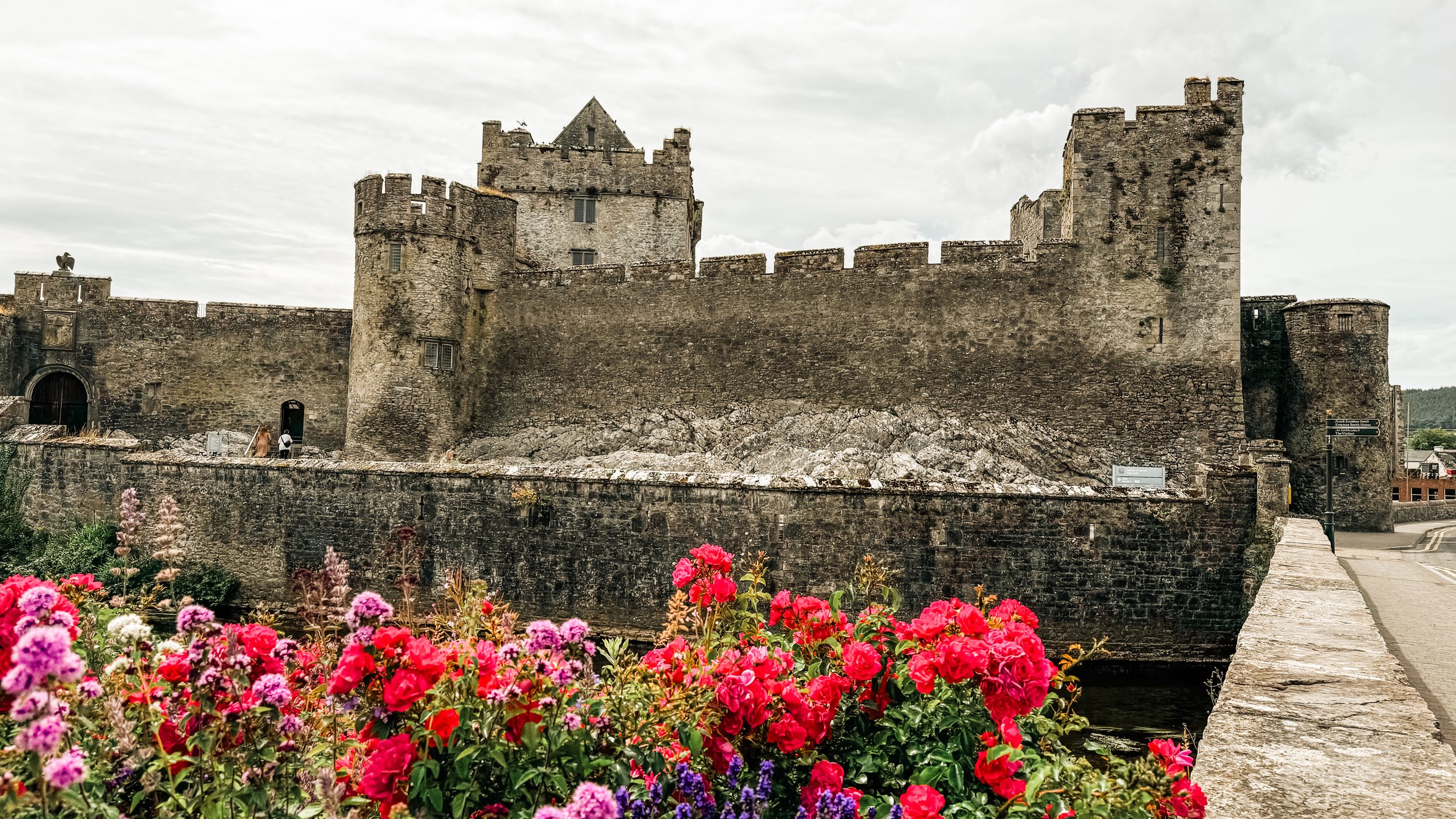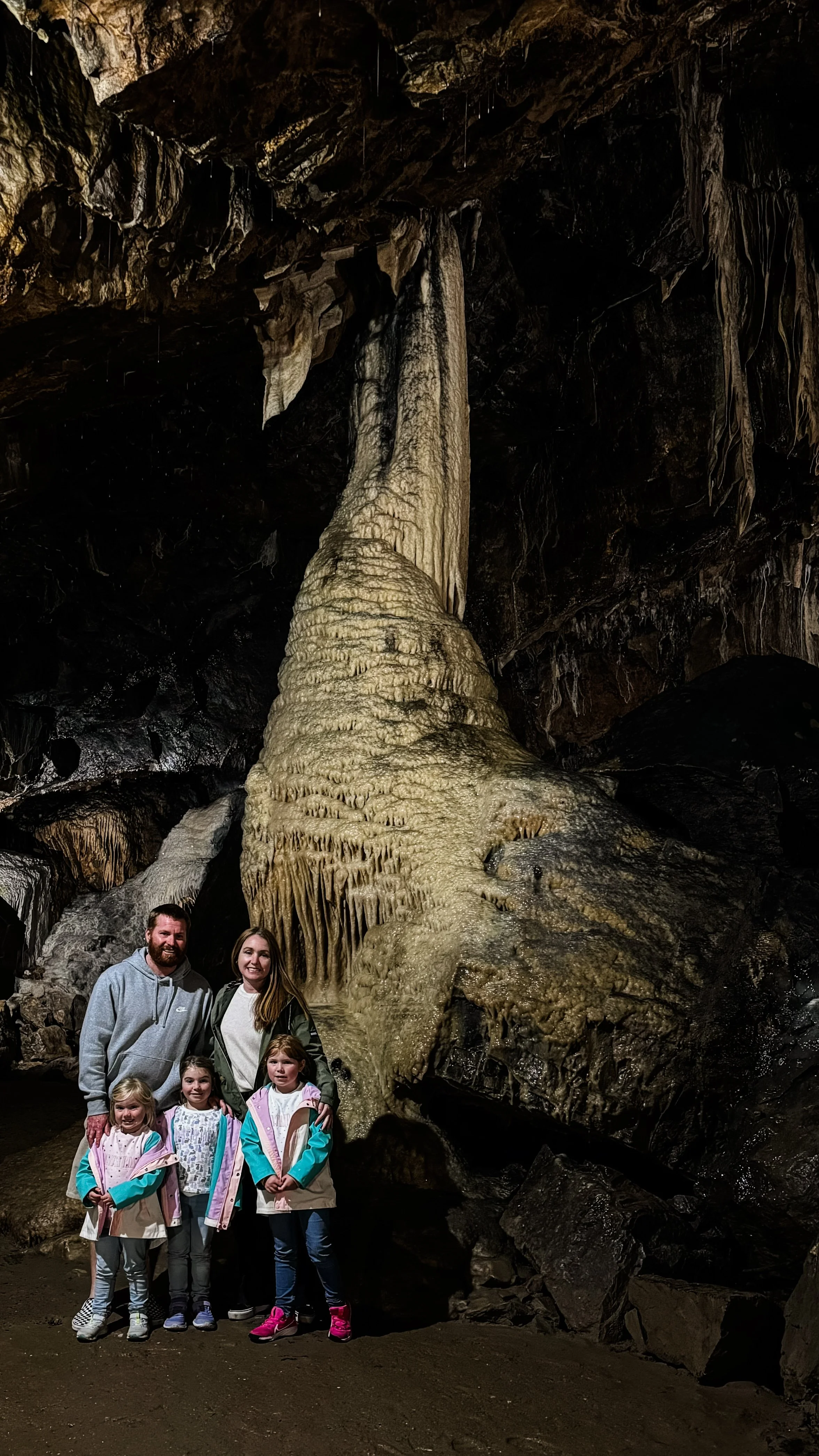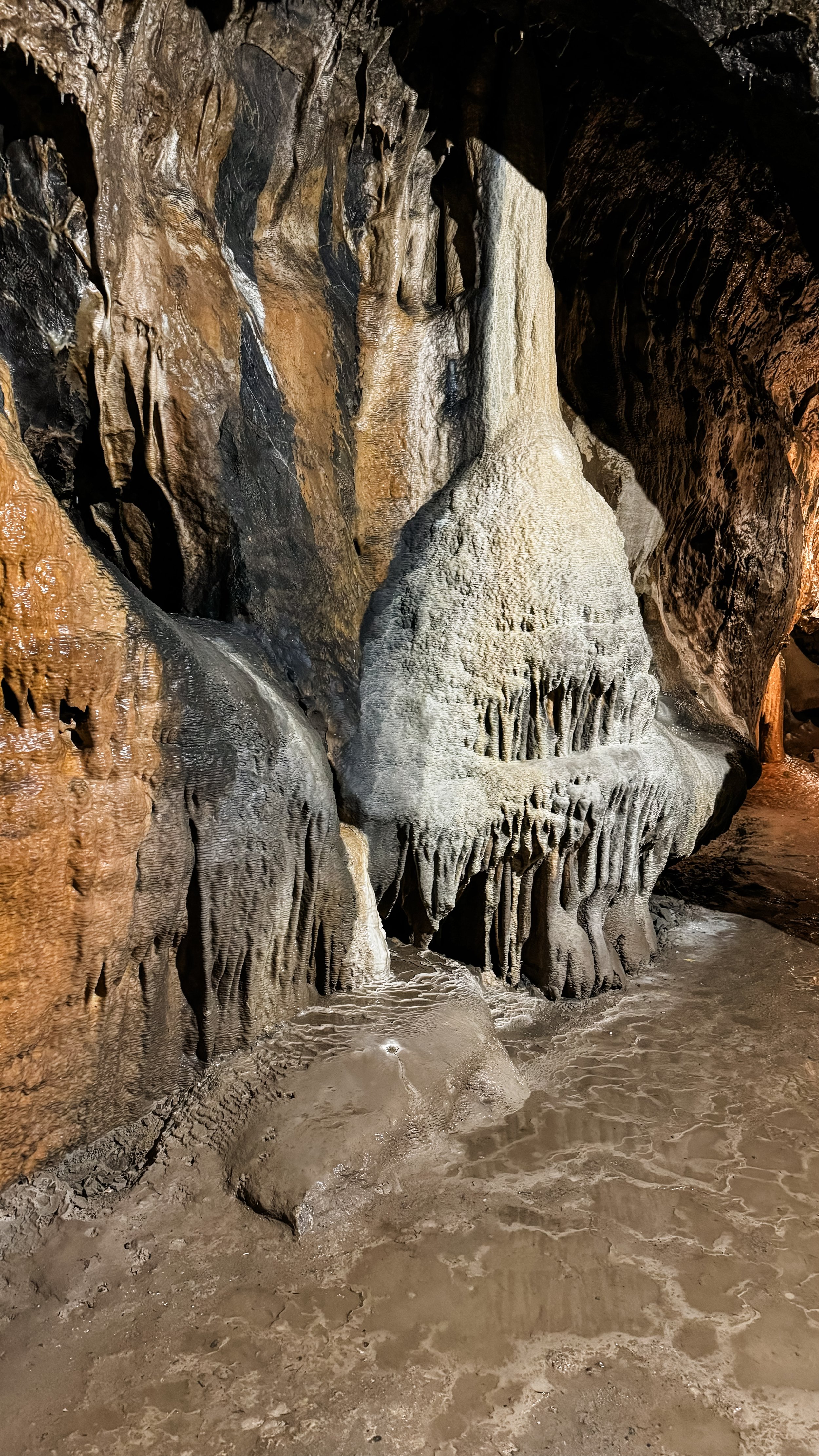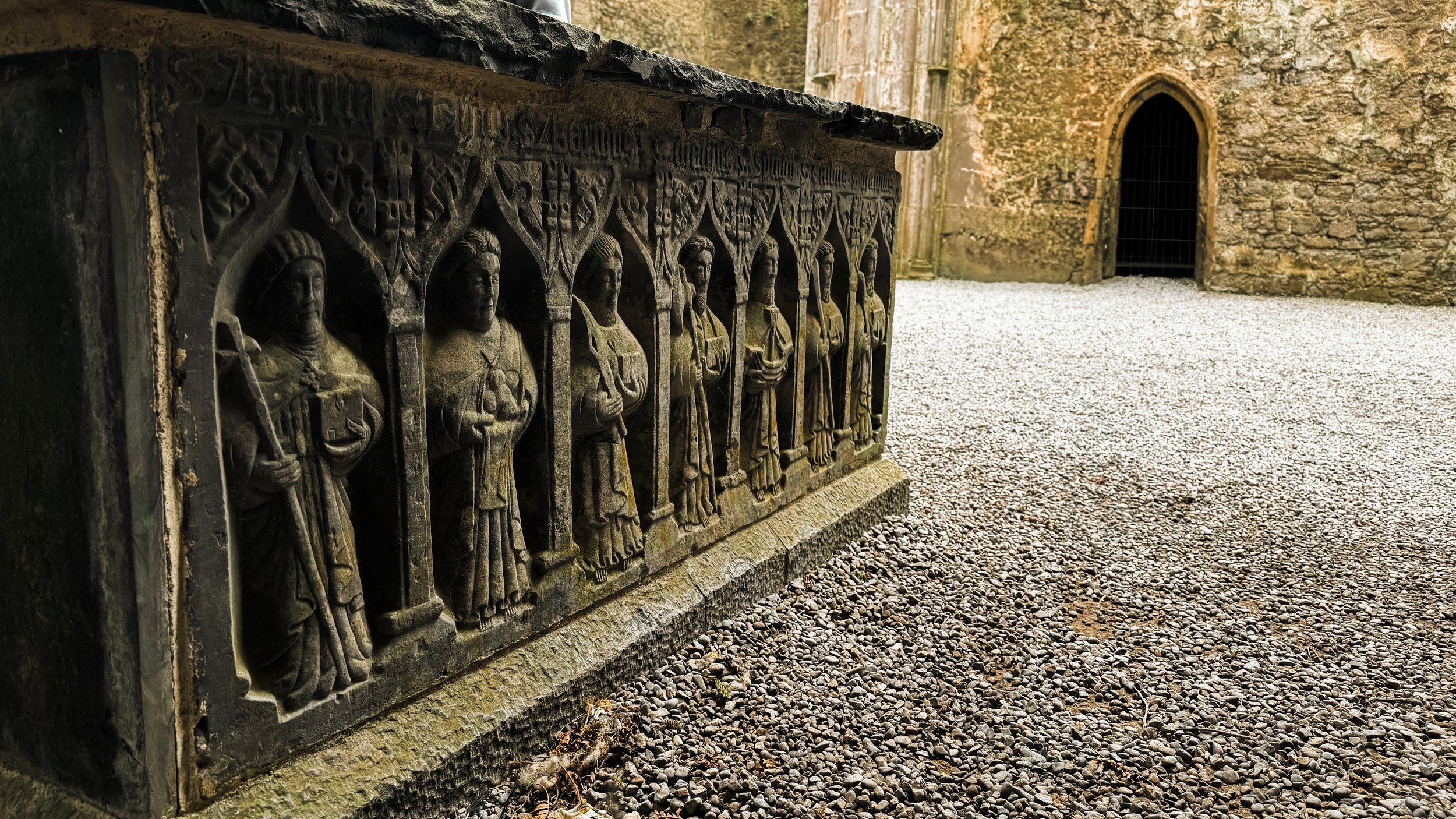Cahir Castle is located in the town of Cahir, along the River Suir. It’s one of Ireland largest and best preserved castles and has been used in many film and TV productions like Excalibur and The Tudors.
As I mentioned earlier, we decided to skip Blarney Castle while in Cork and visit Cahir Castle on the way home instead. It’s surprisingly overlooked, which means it’s less touristy and has cheaper admission prices. (Children under 12 are free)
We were able to have lunch at a cafe right across the road and we didn’t need to book tickets in advance.
The girls really enjoyed climbing up many of the narrow stone spiral stairways and taking in the view out over the river and town below. They particularly like the model of the castle (photograph below), which has an interactive light-up scene that depicted the timeline of events leading up to the castle being captured by Devereux, Earl of Essex, in 1599. Cahir Castle was the powerful stronghold of the Butler Family and was considered impenetrable, however this during this siege it had been battered for three days - the first time heavy artillery was used against it.
I would recommend Cahir Castle to anyone who is also making a stop at The Rock of Cashel, 2. - 3 hours is more than enough time to join the free tour, watch the audiovisual show about the castles history and wander through all the rooms. Plus it’s located in the centre of town which makes it great for a lunch stop, with parking very close by.





























